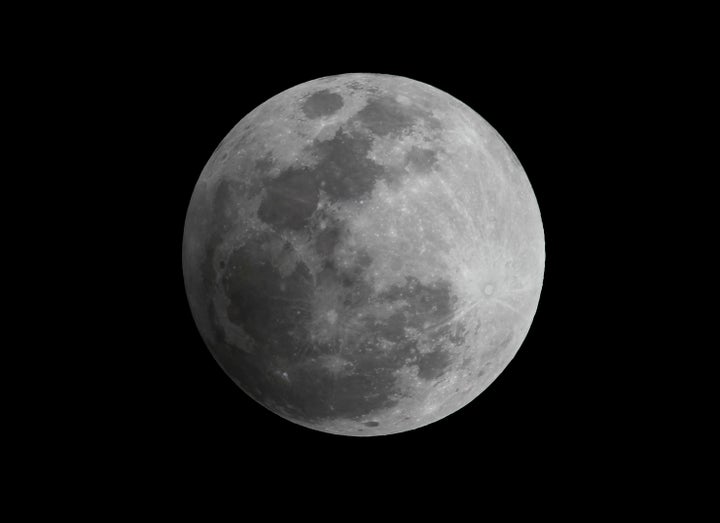
The two Americans who walked on the surface of the Moon 40 years ago this month don't agree on who the "last man" on the Moon was: In interviews afterward they amiably joked about whether the title belongs to the astronaut who stepped out of the hatch last or the last one back in. In any case, Apollo 17 Commander Eugene Cernan and Lunar Module Pilot Harrison Schmitt (with Command Module Pilot Ronald Evans waiting in lunar orbit) share a title no astronaut of their era wanted: the final group of Americans expected to leave Earth and travel to another world in their lifetimes.
What happened after Apollo 17 left the Moon in 1972? The crew returned to a hero's welcome, but the program that launched them all but ended, the victim of budget cuts and changing priorities (particularly the Space Shuttle, approved earlier that year). Some unused Moon hardware later found its way into space; some of it landed in museums: a Saturn V launch vehicle wound up at the Kennedy Space Center in Florida, chopped up into its constituent parts like a broiled chicken. An unflown Skylab Orbital Workshop (the sister ship of a space station launched in 1973) became a popular walk-through attraction at the Smithsonian Institution's National Air and Space Museum in Washington, D.C.
Almost certainly, the next American to gallop across the lunar landscape will be robotic and about the size of a microwave oven, and it won't be flying for the National Aeronautics and Space Administration. Rather, eyeing $30 million in prize money from Google's Lunar X PRIZE initiative, 25 international teams of rocket scientists are hard at working cobbling together funds and know-how to launch a generation of clever robots toward the Moon, land on it, roll around on its surface, and beam back pictures and video. Unlike Project Apollo, this job has been done before -- with NASA's astronauts in the driver's seat of Apollo rovers and Russian ground controllers remotely steering unpiloted Soviet rovers in the 1970s. What's new about Google's challenge is that the teams competing won't be funded by governments or staffed by their employees: Teams must work with private money.
The universities and laboratories have until the end of 2015 to land their rovers, and it's only a matter of time before one succeeds. What will the rovers will do when they get to the Moon, though, is still up in the air. As a tourist destination, the Moon offers few of the scenic vistas found in sci-fi movies. Astronauts bounding around on the lunar surface in the 1960s and 1970s found dusty plains of dull gray, so featureless that a small blue-green orb hovering over the horizon provided more visual stimulation than anything else in sight. In 1999, the creators of the television series Futurama predicted that the Moon's only future lay in tacky theme parks, though tourists might find some distraction in stepping in Neil Armstrong's bootprint.
This scenario is not as far-fetched as it sounds. Google has offered extra prize money for visiting an Apollo landing site. NASA, concerned that well-intentioned explorers could trample on delicate scientific hardware (and disturb some priceless records of human achievement) issued a set of guidelines last year advising X PRIZE competitors to steer clear of flags, footprints, and other legacies of humanity's first exploration of another world. These heritage sites, though, are irresistible targets: easy to get to and filled with photo-worthy memorabilia no one has seen up close in four decades. There might be no better proof of success for a lunar rover team than photographing an iconic artifact of American lunar history.
Knowing the kind of folks who build lunar rovers, it would be difficult to imagine any team purposefully damaging an Apollo site; they are true believers in the church of steely-eyed missile men (and women). When it comes to sensitive artifacts, though, it is easy to kill with kindness, loving precious places to death until little of their pristine splendor remains. NASA, from its own robotic spacecraft orbiting the Moon, might be able to detect such trespassing, but it won't be able to do much to stop it. At best, it might coax competitors toward landing sites less precious than the milestone sites of Apollo 11 or Apollo 17, a direction in which it already seems to be going. Sacrificing one of the six landing zones for the future of space exploration might be a fair trade-off.
No matter which team wins the challenge, the safe bet is that its rocket won't look anything like the behemoths the United States constructed in the 1960s. Robots don't breath, eat, or need to come home, so much of the technology that made Apollo work won't be needed. To modern eyes, the engineering of Apollo's Saturn V launch vehicles appears almost quaint (place your ear against a Saturn V and you can still just barely hear President Johnson), but nothing even remotely like them exists today. The adventures for which we built them are almost unfathomable now, and nothing short of a inexhaustible supply of iPads on Mars would make us work that hard to send people that far, that fast.